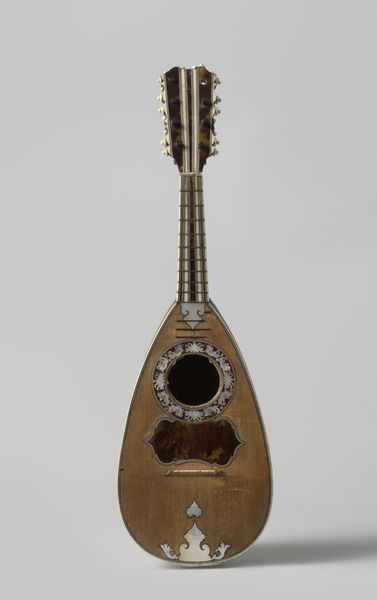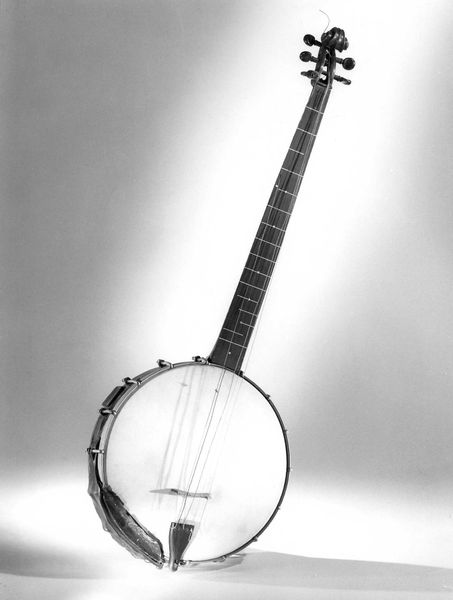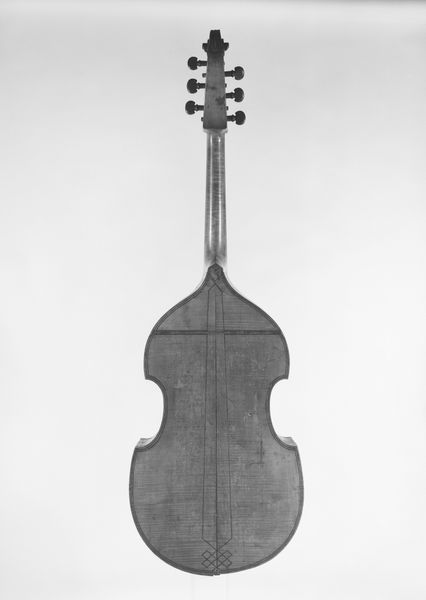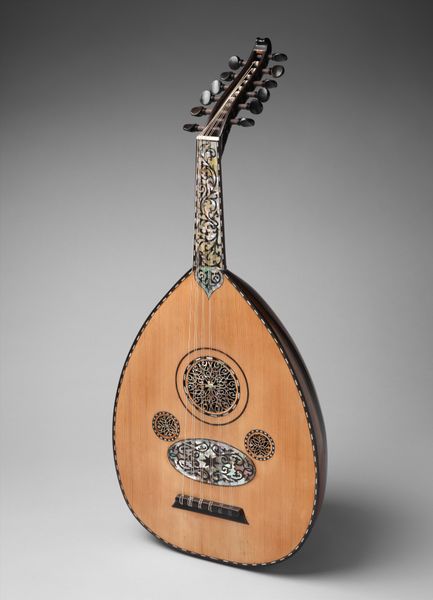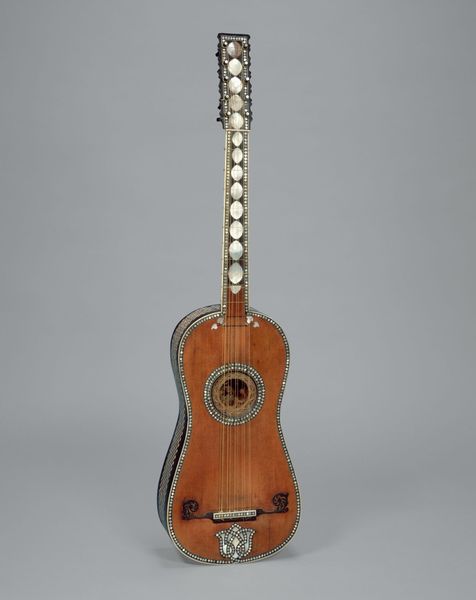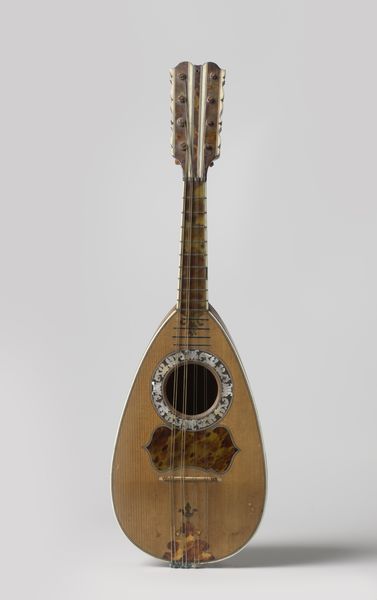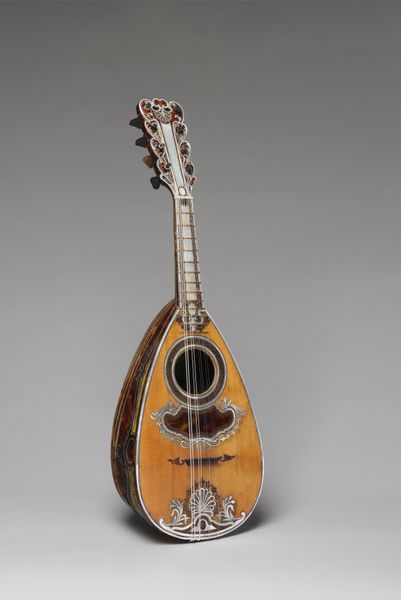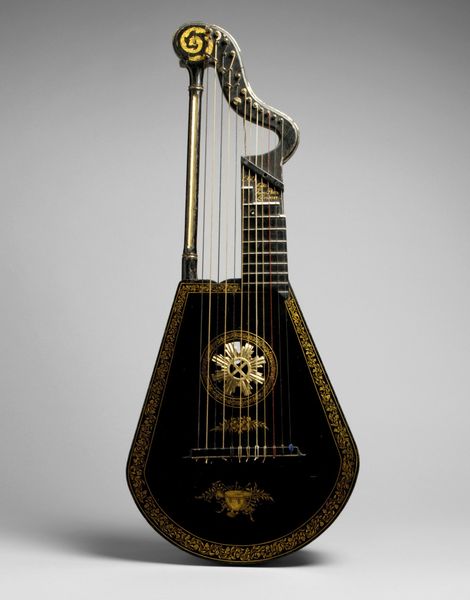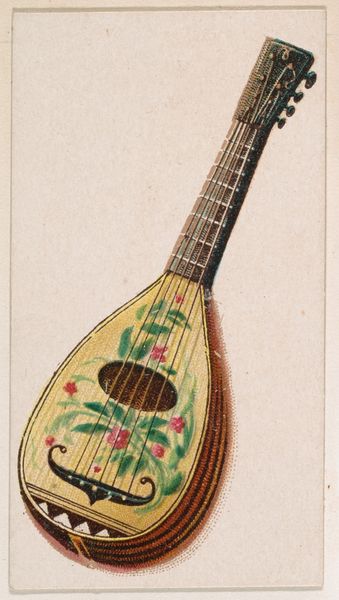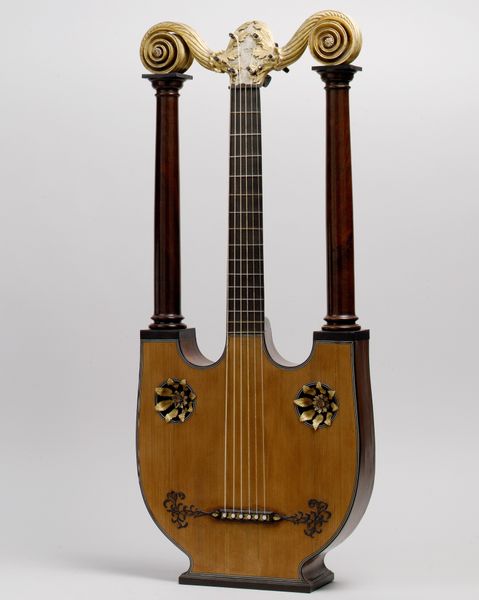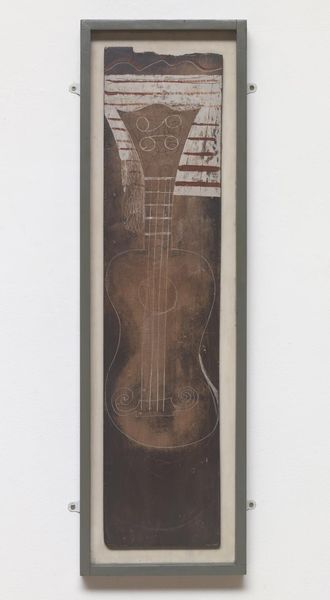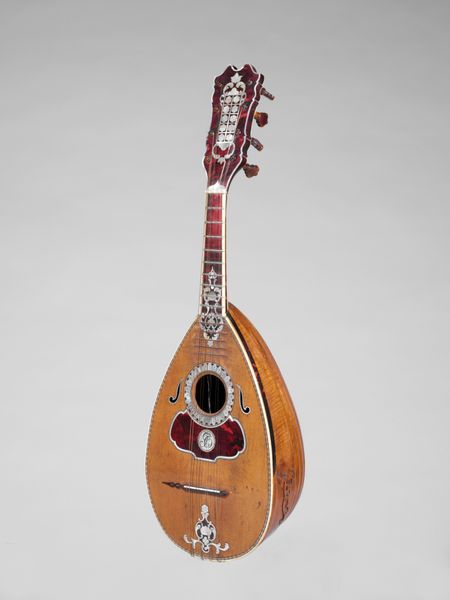
silver, metal, sculpture
#
silver
#
metal
#
ancient-mediterranean
#
sculpture
#
decorative-art
Dimensions: 2 1/2 × 1 1/4 in. (6.4 × 3.2 cm)
Copyright: Public Domain
Editor: This is Jean François Bautte & Co.'s "Watch," a decorative piece crafted between 1800 and 1815 from silver and metal. It's shaped like a musical instrument! I'm really curious to hear your insights, how do you interpret this work within its historical context? Curator: It's fascinating, isn’t it? On the surface, we see a decorative watch masquerading as a lute, a testament to the craftsmanship of the era, but think about the era in which it was crafted, it seems deliberately designed for the leisured, affluent class during a time of political and social upheaval, during a period of enormous inequality. Who could afford such trinkets and what message did it send? Editor: So, the luxury item, intended for the wealthy, almost flies in the face of broader revolutionary movements toward equality, and increased power to lower socioeconomic statuses? Curator: Precisely! The image of people enjoying leisurely moments seems to normalize existing structures. In what way does the choice of depicting the “ancient” style of imagery speak to its time period, rather than when it depicts? Editor: Good question. It highlights how those with money look backward to legitimize themselves instead of recognizing and building something for a better future, and perhaps reflects an escape from the current tumult. It does not push society forward but instead holds onto the status quo. Curator: And this is how seemingly innocuous objects can reveal profound social and political dimensions. Think about this watch and about labor issues surrounding art production at the time; Whose labor produced this object? For whose gaze was this intricate labor meant? What does that tell us about value in this time period? Editor: Thinking about labor is so important, I’d never considered the inequalities built into who got to make art, versus who was able to buy and admire it. Curator: Absolutely. Context helps reveal the underlying power dynamics embedded within objects we might otherwise perceive as simply beautiful or decorative. It changes the way we see art. Editor: Yes! I see this piece in an entirely new light now. It makes me wonder about how labor continues to be erased from popular art.
Comments
No comments
Be the first to comment and join the conversation on the ultimate creative platform.

